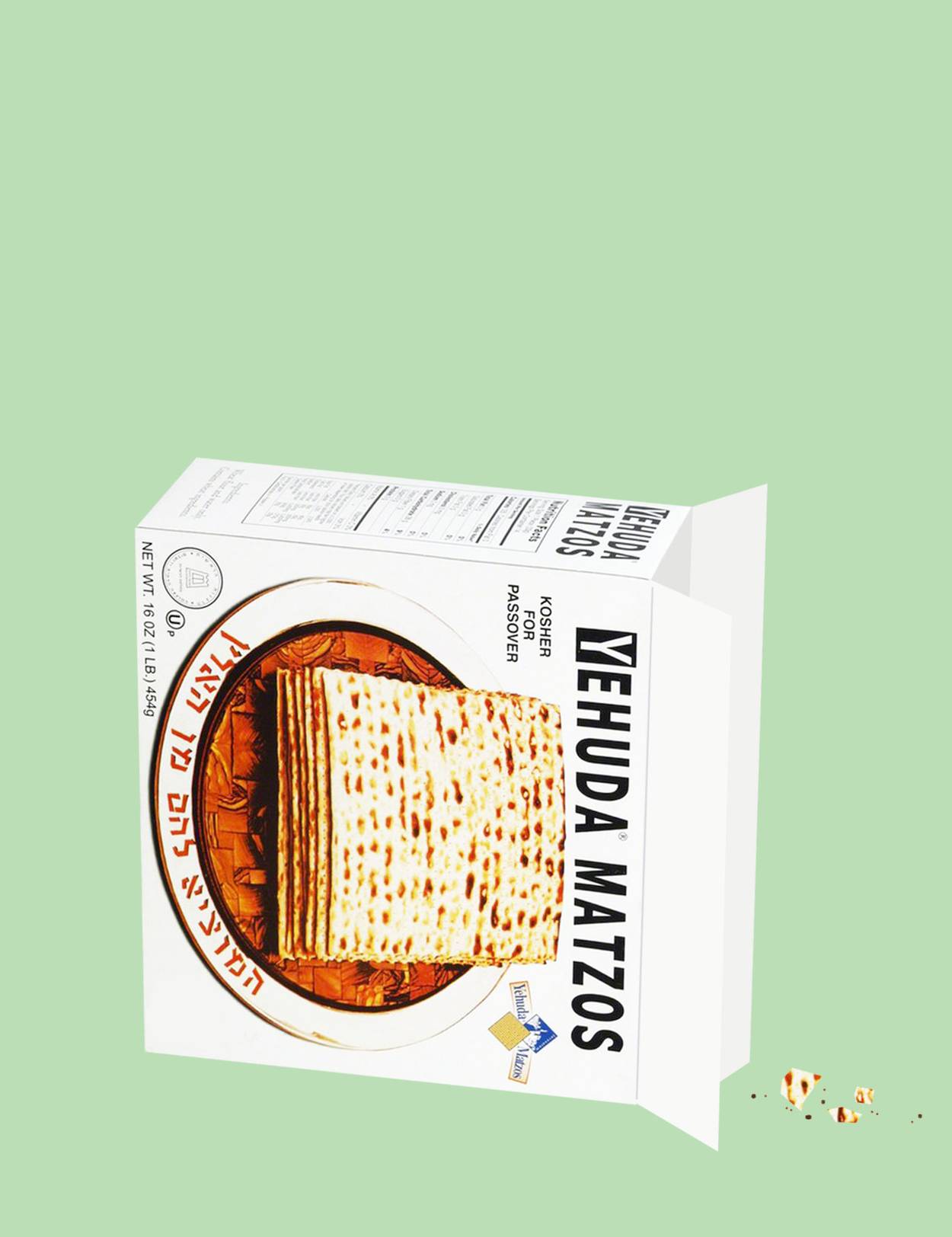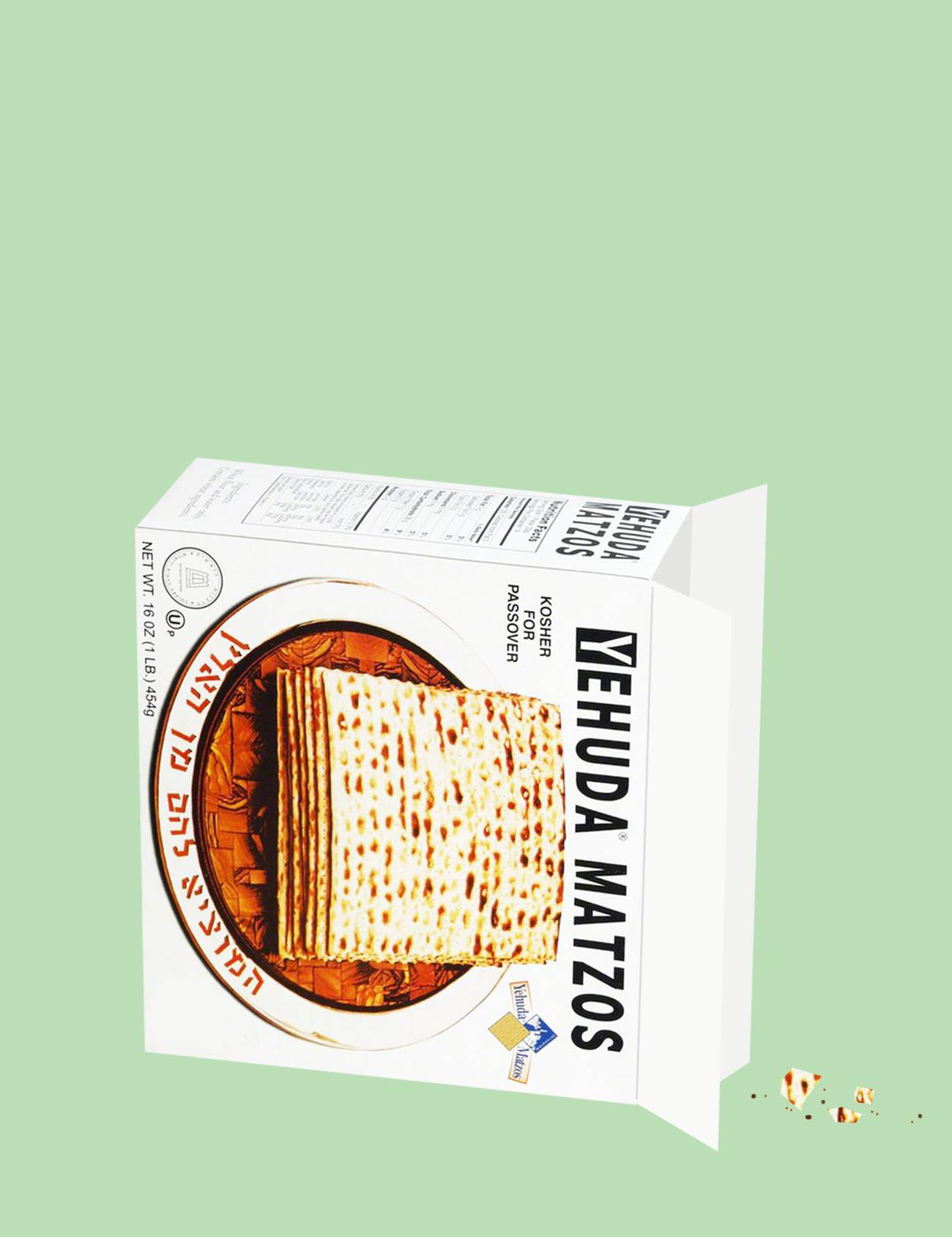Why Oslo Ran Out of Matzo
And what it has to do with Brexit




The week before Passover, the Jewish community in Oslo ran out of matzo—and it was all because of Brexit.
Normally, Kosher Mat—Norway’s only kosher store, housed in the basement of the capital’s only Jewish community center, which is adjacent to the city’s only synagogue—gets its regular matzo from the Netherlands, and all the specialty matzo—whole wheat, gluten-free, and rye—from the United Kingdom. But this year none from the U.K. arrived, so people bought regular matzo instead, and the tiny store quickly ran out. That week, Elisabeth Malting, manager of Kosher Mat and administrator of the synagogue, Det Mosaiske Trossamfund, or DMT, frantically drove around the city and suburbs, collecting spare boxes of matzo from the few families that had volunteered to give up one or two for the greater good, after an email had gone out to members alerting them to the situation. But it wasn’t enough.
“Suddenly, my phone rang. It was Shaul Willhelm,” said Malting, referring to the Chabad rabbi in Oslo, who is not affiliated with DMT. “He saved the day.” Willhelm had about 60 spare one-pound boxes of shmurah matzo, and offered to donate them.
“Since they were donated, we couldn’t sell them,” Malting said, “so the customers who came the last two days before Pesach got one box each for free.” Anxious Pesach-shoppers lined up down the street and around the corner, and to keep everyone safe, Malting reminded them to stand at least 6 feet apart. She handed out numbered entry tickets, since only two people could be in the store at a time. The wait was up to three hours, and she told everyone to take a walk or wait in their car, and that she’d call them when it was their turn. It was cold, and waiting in one of the many nearby cafes was not an option since they were closed due to COVID-19. Once inside the store, each customer had 10 minutes to do their Passover shopping in the minuscule space—less than 150 square feet.
Why the matzo shortage? After the U.K. withdrew from the European Union, trade rules changed, and the bureaucracy around imports and border control became more cumbersome, especially with regard to food. Now all imported goods from the U.K. need customs clearance at least 48 hours before they can be sold in Norway, but if you don’t know what is in the shipment, it’s impossible to declare it. Malting said that it’s like waiting to see if you win the lottery.
“There was simply no matzo in the shipment, despite us having ordered it,” Malting said. For 25 years, kosher imports from the U.K. had been streamlined, but now it was becoming an increasingly unpredictable and challenging process.
If the kosher store had not been heavily subsidized by DMT and benefited from import quotas and reduced customs fees, it would never have been be able to remain in operation. Malting, who is in charge of keeping all the official permits and papers, said what it’s really about is the protection of a national minority that needs access to kosher food to live with its faith. It is in no small part due to the experience of the Jews in Norway during and after WWII that the rights of national minorities are protected by law today. “We have a decent selection of groceries to be a tiny store up here in the North,” Malting said. Meat and chicken are ordered in large, frozen quantities twice a year, before Rosh Hashanah and Passover, and stored in a remote food-storage facility willing to work with such a small-scale customer. Chicken legs and hot dogs “for the kids” are regular bestsellers. During the holidays, it’s gefilte fish, pickles, and salami that fly off the shelf. “If they can’t get the whole, long salami, it’s a crisis!” Malting said, smiling.
During the warmer months they stock steaks for grilling as well as other popular summer items such as lamb chops and veal chops. Red meat is imported from France and the Netherlands, but chicken has traditionally been the big item imported from the U.K. Because Israel is not part of the EU, the kosher store has acquired Israeli goods from an importer in Sweden who functions as a middleman, saving the Norwegian Jewish community the heavy import tax required on items from non-EU countries.
Liv London has shopped for kosher food in Oslo for herself and her family since long before the current store opened in 2006. She said that in the years following WWII, when the community received a shipment of meat and cheese from Denmark every other Thursday, they’d go to the synagogue basement to see what they’d be able to get their hands on: “You never knew if the frozen lump of meat in the plastic package was whole or pieces; you just appreciated what you were offered.” Her father, who was born in 1913, remembered when chickens were slaughtered in the courtyard of the synagogue. During his cheder class, the cantor would disappear for a few minutes and return to his students after he’d completed the alfresco shechting.
The history of kosher food in Norway—and especially of meat slaughtered according to the laws of shechita—is complex. In the 1920s, the debates among politicians were particularly virulent and filled with antisemitic tropes. Ervin Kohn, the president of DMT, pointed out that the eventual prohibition against kosher slaughter was enacted in 1930, five years before it was decreed in Nazi Germany. Today, only three countries in Europe do not allow kosher slaughter: Norway, Sweden, and Switzerland. Importing kosher products became the de facto necessary solution, and that is where the story takes an interesting turn.
It was Hanna Khoury, a Christian Israeli Arab who identified as Palestinian, who owned the first store dedicated to carrying kosher goods in Oslo. In the early 1980s he began importing goods from Israel and the Middle East, and as the former president of DMT Anne Sender said, “Khoury served our community out of his own good heart.” In addition to his little storefront in downtown Oslo, he also opened a pita bakery and a cheese factory, and for several years was the go-to caterer for the Jewish community.
When Khoury decided to close shop in the mid-1990s to pursue other ventures, a string of mostly poorly managed solutions followed, all ending in failure. One year, the Norwegian Ministry of Foreign Affairs agreed to help the community get kosher chickens for the High Holidays by easing import restrictions, and a designated cargo plane from the U.S. was involved, as well as the kindly cooperation of a butcher in the States; another time, Sender and her husband traveled to Paris to plead with butchers to agree to help their tiny community by sending fresh products at predictable times. Then, finally, in 2006, under the leadership of Sender and with what she said was the invaluable business know-how of Liv London, Kosher Mat was established as an LLC—under the auspices of DMT.
The existence of an organized, established Jewish community in Norway is a fairly recent development. There were few Jews in Norway from the Middle Ages until the late 1600s. Some Sephardic Jews from Spain and Portugal were given special dispensation around the time of the Inquisition, and merchants and bankers had been permitted but only as exceptions. But in 1687 a constitutional ban came into effect, which led to Jews being jailed and expelled. This ban remained in place until it was finally repealed in 1851, thanks to the Norwegian writer and polemicist Henrik Wergeland, who was the leading champion for the cause. Only 25 Jews came to Norway in the two decades following the repeal, but by 1910 about 1,000 Jews had arrived, fleeing pogroms in Russia.
Norway was occupied by Nazi Germany from 1940-45, and before the systematic deportation of the Jews began in 1942, there were about 2,173 Jews living in the country. At least 765 Jews from Norway were murdered by the Nazis by the time the war was over, and debates about accountability are still going on in articles, books, and films as historians continue to uncover problematic facts and new narratives that question popularly held beliefs about, for example, the heroic role of the resistance.
Today, Jews in Norway number somewhere between 1,500 and 1,700; 700 are members of DMT, which is Orthodox and the only operating synagogue left. (The country’s other synagogue, located in Trondheim—300 miles to the north—no longer has regular services and since 1995 has been used primarily as a museum and cultural venue.) There are small, loosely organized, but active Jewish communities in Bergen, Stavanger, and Trondheim, numbering between 50 and 135 members each. As for customers in the kosher store, Malting guesses that around 40 families make up the regular clientele.
For all the other foods a kosher household needs that are not stocked by the kosher store, there is “The Kosher List,” published on DMT’s website and also available as a mobile app; this list tells people which items available in ordinary grocery stores are kosher. DMT’s Rabbi Joav Melchior, who is the head of the Va’ad HaKashrut of Norway and who certifies production facilities on behalf of the Orthodox Union, makes sure the list is up to date. This means staying in touch with food production companies, such as Tine Meierier, the nation’s largest dairy consortium. Most items on the kosher list do not carry a certification, unless they are imported and arrive with a hekhsher already on them, such as Heinz ketchup. As Melchior pointed out, in countries with small Jewish communities, this is historically how they manage.
After the Passover matzo debacle, Malting concedes that the kosher store may have to find a different provider for chicken, the major and most important import from the U.K.
London said she deeply appreciates everything DMT and the kosher store mean to her family. “It’s impressive how the Jews have survived as a community since they first arrived in the country, and how they have adjusted and made Jewish life possible and thriving in Norway,” she said. “I have experienced what it’s like to have much less selection than what we have today, so I think we are super privileged now.”
Nina Lichtenstein is a writer, teacher, and storyteller who divides her time between Maine and Tel Aviv.